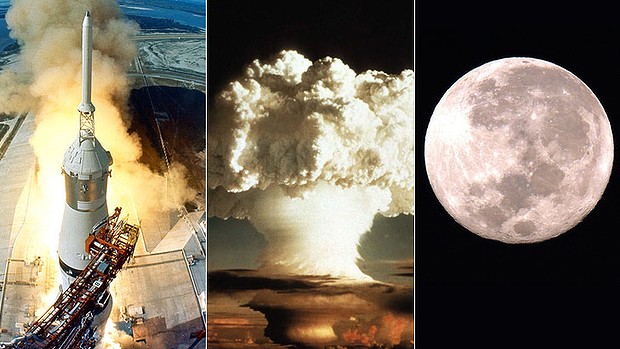
The world is straying further away from commitments to combat climate change, bringing the prospect of catastrophic global warming a step closer, a UN report said on Wednesday. The warning came as nearly 200 governments prepare to meet in Qatar for international climate negotiations starting next Monday.
The gap between what world governments have committed to by way of cuts in greenhouse gases and the cuts that scientists say are necessary has widened, but in order to stave off dangerous levels of global warming, it should have narrowed. There is now one-fifth more carbon in the atmosphere than there was in 2000, and there are few signs of global emissions falling, according to the new report from the United Nations Environment Programme (Unep).
The warning of increasing emissions came as fresh evidence was published showing the last decade was the warmest on record for Europe. The European Environment Agency (EEA) said all parts of the region had been affected, with higher rainfall in northern Europe and a drying out in the south, bringing flooding to northern countries including the UK, and droughts to the Mediterranean.
According to the United Nations report, drawing on research from more than 50 scientists, the widening gap between countries’ plans and scientific estimates means that governments must step up their ambitions as a matter of urgency to avoid even worse effects from warming. “The transition to a low-carbon, inclusive green economy is happening far too slowly and the opportunity for meeting [scientific advice on emissions targets] is narrowing annually,” said Achim Steiner, executive director of Unep.
The explicit goal of international policy is to prevent global warming of more than 2C above pre-industrial levels, which scientists say is the limit of safety beyond which climate change is likely to become irreversible and catastrophic. That goal that has been roughly translated as a concentration of carbon in the atmosphere of no more than 450 parts per million. To meet this, governments would have to ensure that no more than 44 gigatonnes (Gt) of carbon dioxide equivalent (CO2e) is emitted per year by 2020. The UN’s latest research, published on Wednesday as the Emissions Gap Report 2012, shows that on current trends, emissions by 2020 will be 58 Gt CO2e.
This gap between the cuts needed and the cuts planned brings the prospect of dangerous levels of climate change – entailing more extreme weather including floods, droughts and fiercer storms, such as those witnessed this year – much closer.
Even if countries manage to change direction in time and meet the emissions-cutting targets they have committed to in the past three years, the gap will still be large – about 8 Gt by 2020. To meet scientific advice, countries would have to agree to much bigger curbs on emissions than they have yet done – and there is little chance of that happening at the next round of annual climate negotiations, which begin on Monday in Doha, Qatar. At the fortnight-long talks, ministers are expected to set out a few more details of how they will work towards their agreed plan of drawing up a new global climate change treaty by 2015, to come into effect from 2020.
Despite the slow pace of progress, Steiner said there was still a chance for the world to obey scientific advice. He said: “Bridging the gap remains do-able with existing technologies and policies.” He said many of the measures governments were undertaking, from investments in renewable energy to public transport and higher energy efficiency standards for buildings, were yet to bear fruit, and their effects should start to be seen in the next few years.
But he warned that countries must avoid being “locked in” to high-carbon infrastructure – power stations and buildings constructed today will still be in operation and spewing out carbon decades from now, and that will be unsustainable. It would be cheaper to make sure that all such infrastructure is low-carbon from the start, than to abandon it or refurbish in years to come.
Christiana Figueres, the UN’s top climate official, who will head next week’s talks, said: “Time is running out, but the technical means and the policy tools to allow the world to stay below 2C [of warming] are still available to governments and societies.”
Environmental groups warned that the UN report showed governments were failing. Jennifer Morgan, director of the climate and energy programme at the World Resources Institute, said: “This report is another harsh reminder that the world is simply not moving aggressively enough to tackle the climate challenge. The gap is growing and carbon dioxide levels continue to rise, yet the current pledges and commitments by countries remain sorely inadequate. We are already seeing how climate change – with more extreme weather events, rising seas and more droughts – is taking its toll on people, property and our economy. Without a rapid change in direction, the world is headed more and more firmly down a path to even more severe changes that will be felt around the globe.”
In Europe, the EEA said land temperatures in the decade from 2002 to 2011 were 1.3C warmer than the pre-industrial average. Europe could be between 2.5C and 4C warmer from 2050, according to projections. The study found heat waves have increased in frequency and length, while river droughts have been more severe and frequent in southern Europe. Glaciers in the Alps have lost about two-thirds of their volume since 1850.
Prof Jacqueline McGlade, executive director of the EEA, said: “Climate change is a reality around the world, and the extent and speed of change is becoming ever more evident. This means that every part of the economy, including households, needs to adapt as well as reduce emissions.”
via Slow pace of carbon cuts brings catastrophic climate change closer: UN | Environment | guardian.co.uk.


























 Get on the Ground, Pig
Get on the Ground, Pig